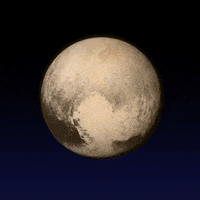Tantalizing Pluto views suggest active surface but won’t be seen again for 161 years.
The scientists have more work to do, with observations scheduled for Saturday.
The following written content by Meghan Bartels
For a brief moment in time in July 2018, the solar system aligned to show Earth the fully sunlit disk of Pluto, an arrangement that won’t occur again for 161 years.

Planetary scientist Bonnie Buratti was ready: She had been waiting for a decade for the opportunity to catch the rare sight in hopes of filling a gap in knowledge that even the carefully planned New Horizons mission couldn’t tackle. The result is an enigmatic plot of light from Pluto and its moon, Charon.
“We grasped this once-in-a-lifetime — well it’s once in more than a lifetime, once in two centuries — opportunity to see Pluto fully illuminated,” Buratti, who works at NASA’s Jet Propulsion Laboratory in California and is the lead author on a new paper presenting the observations, told Space.com.
Observations of a solar system body at and around the point of its maximum illumination allow scientists to measure what they call the “opposition surge,” a sudden increase in brightness of an object as it is fully illuminated, disproportionate to the extra sliver of surface area being illuminated.

And opposition surge isn’t just a curious optical phenomenon: Scientists believe the pattern of the surge is influenced by the density of material on a world’s surface. “By looking at how much an object brightens when it gets full, you can tell something about the surface texture and what the surface is like — is it fluffy? Is it snowy? Is it compact?” Buratti said.
For example, the opposition surge of the full moon is caused by the loose, dusty regolith at its surface, she said. “These particles cast shadows and those shadows rapidly disappear as the face becomes illuminated to the observer.”
A fully illuminated Pluto is difficult to catch from Earth because the inclination of the dwarf planet’s orbit compared to our own. Skywatchers use the term “opposition” to refer to the point in Earth’s year when a particular solar system object appears opposite to the sun in our skies. However, a celestial body doesn’t necessarily appear fully illuminated at that time, particularly something like Pluto that is often above or below the plane of Earth’s orbit around the sun. Read more from Space.





